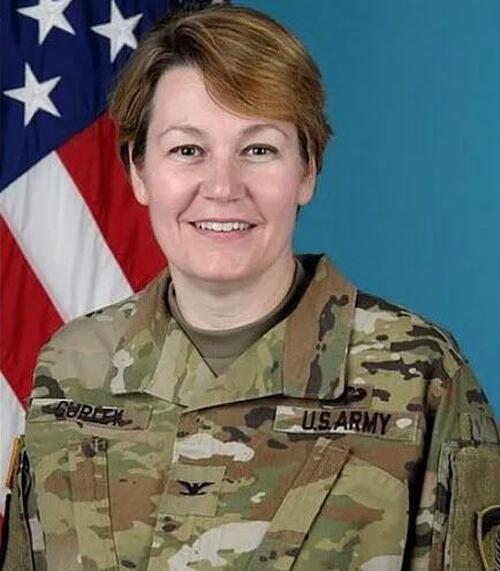The Supreme Court Marshal Urges States To Crackdown On Protesters
In a rare move, Supreme Court Marshal Gail Curley has sent letters to Maryland Gov. Larry Hogan, Montgomery County Executive Marc Elrich, and Virginia Gov. Glenn Youngkin demanding that authorities put an end to picketing and “threatening activity” outside the homes of SCOTUS justices.
The letter seeks to use state laws to achieve what the Justice Department has clearly rejected under federal law. If the letter prompts arrests, we could see a major free speech challenge in the courts. The timing of the letter, however, is particularly interesting and may reflect a recognition of the limits of the federal law.
Like most Americans, I have denounced these protests targeting the homes of justices as excessive and reckless (though one law professor actually suggested that such protests could be more aggressive). However, I have also questioned the use of a federal law to arrest protesters.
Under a federal law, 18 U.S.C. 1507, any individual who “pickets or parades” with the “intent of interfering with, obstructing, or impeding the administration of justice, or with the intent of influencing any judge, juror, witness, or court officer” near a U.S. court or “near a building or residence occupied or used by such judge, juror, witness, or court officer” will be fined or “imprisoned not more than one year, or both.”
I believe that a court would declare the use of the law against protesters on public sidewalks to be unconstitutional under the First Amendment. Indeed, if you apply the broad interpretation of the law, even protests outside of the Supreme Court building could result in arrests since courthouses are also included.
However, the timing is particularly interesting. After the release of the decision in in Dobbs v. Jackson Women’s Health Organization, I noted that it would be even harder to use this law because the statute refers to “interfering with, obstructing, or impeding the administration of justice, or with the intent of influencing any judge … in the discharge of his duty.” With the release of the decision, there is no chance that the protesters are interfering, impeding, or influencing the decision. Thus, even if the constitutional arguments were rejected, a court could question whether the law can be read as applying to protests generally against the justices for their views.
That is what makes the date so interesting. Dobbs came out on June 24, 2022. One week later, Curley sought enforcement of state laws as an alternative to federal enforcement. It may reflect the view that, even if the law is constitutional to arrest protesters, it would be narrowly construed in light of the fact that Dobbs is now on the books. Since it was clear for weeks that the Justice Department would not enforce the law to arrest protesters outside of these homes, the timing of the letter could reflect a dwindling likelihood of enforcement in light of the end of the term.
Curley wrote Gov. Hogan: “I would respectfully request that you direct the Maryland State Police to enforce Maryland and Montgomery County laws that squarely prohibit picketing at the homes of Supreme Court Justices who reside in Maryland.”
The state laws, however, would still face the same constitutional challenges. While noise and other non-content-based regulations can be enforced, barring any protests that do not block streets could be difficult to maintain.
Both the Maryland and Virginia governors responded by calling on Attorney General Merrick Garland to use his authority under federal law to stop the protesters.
There is an interesting question of whether Curley consulted with Chief Justice John Roberts. There is usually considerable coordination with the Chief Justice, but the approval of Roberts could cause later ethical issues if a challenge comes to the Court on appeal. If Roberts green lighted the letters, he is directly involved in the decision and effectively endorsed the underlying interpretation (and use) of the state laws. In such a case, he should recuse himself from any appeal.
Roberts would not be the only one with conflict issues. All of the justices would be beneficiaries of such enforcement, but the six conservative justices are the subject of these specific protests. They could effectively resolve such conflicts by simply denying review in any challenge and allow the lower courts to be the final word on the constitutionality of such enforcement.
Yet, some justices might not be pleased by the Marshal essentially advancing such a legal claim in calling for this crackdown on protesters. By sending the letter, Curley is speaking as a high-ranking official in the Judicial Branch. She is clearly not just encouraging the use of these laws, but implicitly saying that these laws can be used in this way to stop any further protests at these homes.
What is striking about this effort is that Curley has reportedly not reached out to FBI for assistance in catching the leaker of the Dobbs decision. The Supreme Court is just a few blocks away from the leading expert agency in the world on computer and forensic investigations. Yet, Roberts and Curley have kept this investigation confined to their relatively small and inexperienced staff. That has left many of us perplexed since this is one of the greatest attacks on the internal operations and integrity of the Court in its history.
The letter could well prompt a crackdown on the protesters. We could then watch these constitutional issues play out in court soon.
Here is the Maryland letter: July-1-2022-letter-to-Hon.-Larry-Hogan
Tyler Durden
Sun, 07/03/2022 – 21:05

